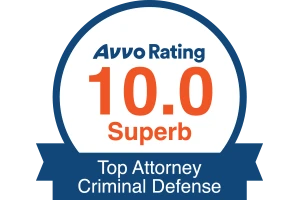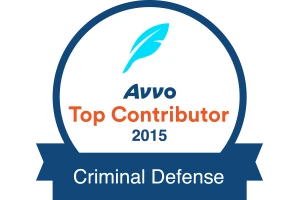Since 1993
It Wasn’t Me

Honey came in and she caught me red-handed, Creeping with the girl next door Picture this, we were both butt naked, banging on the bathroom floor How could I forget that I had given her an extra key All this time she was standing there, she never took her eyes off me But she caught me on the counter (it wasn’t me)
Saw me kissin’ on the sofa (it wasn’t me)
I even had her in the shower (it wasn’t me)
She even caught me on camera (it wasn’t me)
– Shaggy (from the song “It Wasn’t Me”)
I’ve been defending criminal cases in Orlando since 1993, so trust me when I tell you that I’ve heard more than my fair share of clients tell me “it wasn’t me”. And, of course, I believe them.
The “it wasn’t me” defense is a great defense. The question is, how do you back it up? Well, the good news is that you don’t really have to back it up in some instances. After all, it’s the state’s burden to present the evidence. And, to see just how you can win with the “it wasn’t me” defense–without even presenting any evidence–let’s take a look at a real life theft case.
Our example of the day comes compliments of Titilayo Dokun, she was convicted of public assistance fraud in the case of Dokun v. State, 79 So.3d 190 (Fla. 1st DCA 2012). Basically, public assistance fraud cases are simply paper trails that don’t match up. For example, when a citizen is working, taxes are paid on that employee’s social security number. When the employee is also receiving public assistance, the earnings from the employee must match up to what is reported by the employer (obviously, if you earn too much, public assistance will be terminated). Some folks “forget” to tell the government that they’ve earned too much to continue receiving benefits, and a criminal case comes soon thereafter.
In Dokun’s case, the State was able to show that–in fact–a person named Titilayo Dokun applied for public assistance from the Department of Children and Families. The State was also able to prove that, in fact, a person named Titilayo Dokun actually received public assistance from the Department of Children and Families. And, finally, the State was able to prove via “ample evidence” that a person by the name of Titilayo Dokun received income that may have disqualified her from receiving such benefits.
So, you see where a jury might have found Dokun guilty. But do you see the problem with this conviction? Well, it’s a classic “it wasn’t me” situation. Did the State ever present any evidence that the person sitting in the courtroom–who happens to be named Titilayo Dokun–is the same person that applied for public assistance? No. Did the State ever present any evidence that the person sitting in the courtroom is the same person that received the disqualifying income? No. As such, Dokun’s conviction was overturned. The State has the burden to connect the dots here on identity. Really, this is no different than a worthless check case where everyone knows the names on the checks, the problem is proving who really cashed the check (that’s why you’re seeing more and more thumb prints these days).
What would have made the difference here? Physical evidence like a thumb print on the public assistance application. Or, live witness testimony of some sort indicating that Dokun used the public assistance “credit card” to make purchases. I had a case once where my client was caught on video at the cash register at Target. In Dokun’s case, the State proved that the government was ripped off, but they never presented one witness that could say the person sitting in the courtroom was the one who did it. Classic.











